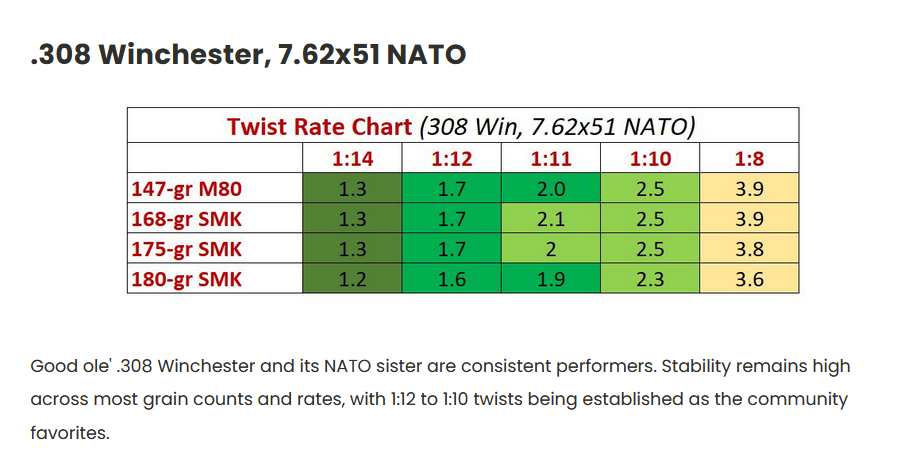“Blessed be the LORD my strength,
which teacheth my hands to war,
and my fingers to fight:”
(Psalms 144:1)
“YOUR ARMS RESOURCE”
TWIST RATE
WHAT IS BULLET TWIST RIGHT?
The spinning of a Bullet as it travels down the Barrel.
This spinning affects bullet stability; stability affects bullet accuracy and range.
Twist Rate is affected by the rifling of the barrel, the barrel length and the weight/grains of the bullet.
-
MATCHING BULLET WEIGHT/GRAIN WITH RIFLE TWIST
Factors between 1.5 and 2.0 are ideal for all bullets and calibers.
https://www.80-lower.com/80-lower-blog/ar15-barrel-twist-rates-explained/
-
Rifling Twist Rate
By Chuck Hawks
Inside of a rifle barrel there are spiral grooves, called rifling. These are intended to spin the bullet to keep it stable (point on), without wobbling or tumbling, during its flight to the target. The tighter the spiral grooves, the faster the bullet spins. The tightness of the spiral is called the "twist rate."
The rate of twist is expressed as one turn in so many inches (i.e. 1 in 10" or 1:10). The caliber, length, shape and velocity of a bullet determine its optimum twist rate. The standard twist for a rifle barrel is designed to stabilize the range of bullets and velocities normally associates with that particular cartridge out to very long range. Spinning a bullet markedly too slow or too fast is detrimental to accuracy.
It takes less twist to stabilize a given bullet at high velocity than at low velocity. At the same velocity in the same caliber, longer bullets require faster twist rates than shorter bullets.
READ THE REST OF THE ARTICLE AT https://www.chuckhawks.com/rifling_twist_rate.htm
-





